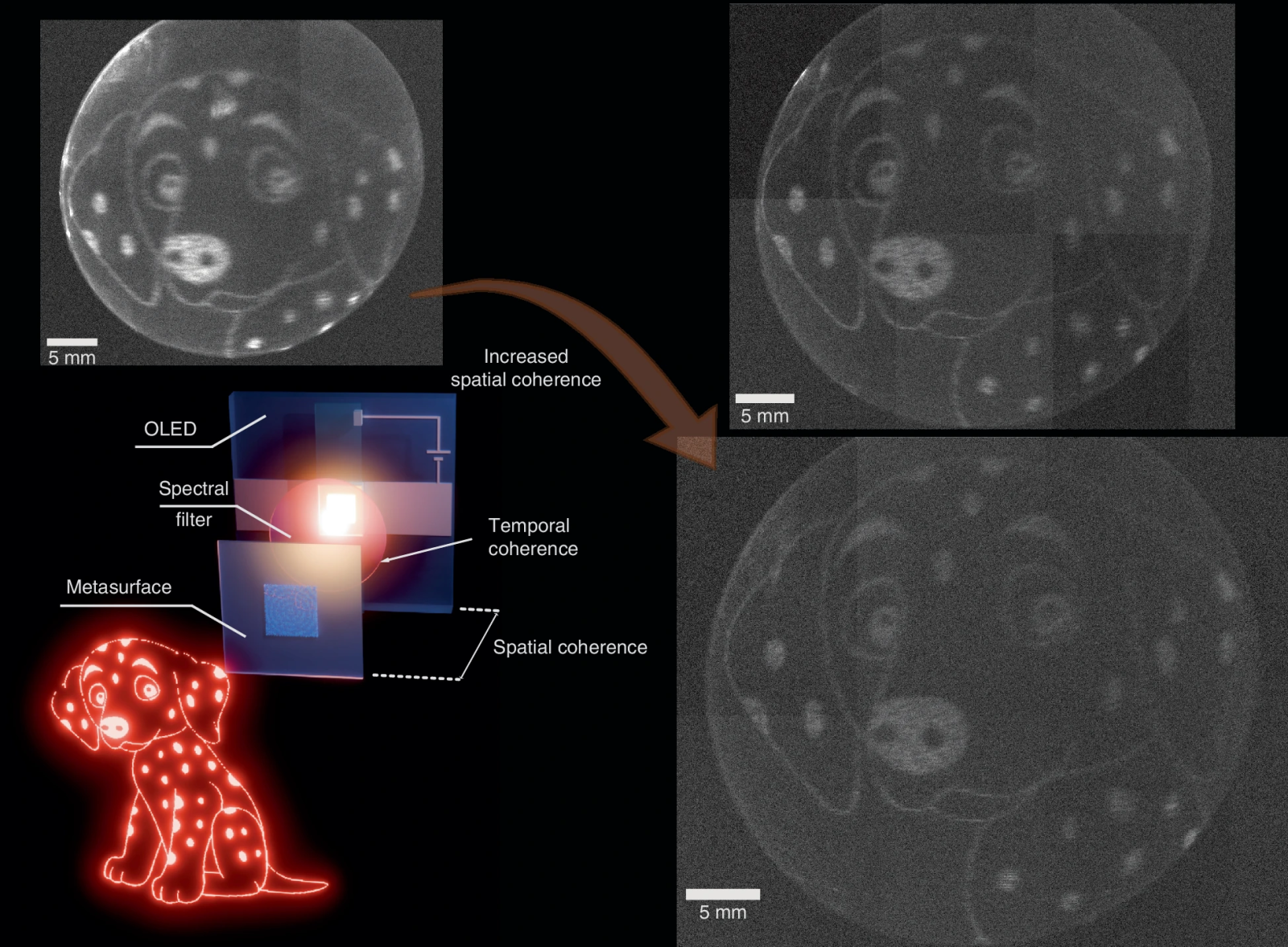📱 Holograms from your smartphone: the breakthrough that changes everything?
Follow us on Google News (click on ☆)
This approach could make holograms accessible to everyone, not just laboratories or cinemas. We can already imagine uses in communication, gaming, or entertainment, with images literally floating before our eyes.

The OLED was placed at different distances (top left: 1.2 inches, top right: 2 inches and bottom right: 2.4 inches) from the metasurface.
OLEDs are already well known: they are the tiny colored light dots that form the image on the screen of some phones or televisions. They are flat, thin, and capable of producing their own light. Their compactness and efficiency make them ideal candidates for creating new light sources that can be easily integrated into miniaturized devices.
Holographic metasurfaces, on the other hand, function somewhat like stained glass at a microscopic scale. They are composed of tiny structures called "meta-atoms," each modifying the light that passes through them. By playing with their shape and arrangement, researchers can direct light to create three-dimensional images without needing lasers.
The St Andrews team has shown for the first time how to unite these two technological building blocks. According to Professor Ifor Samuel, quoted in the journal Light: Science & Applications, this breakthrough opens up unprecedented perspectives for creating holograms. His colleague Andrea Di Falco emphasizes that this removes several technical barriers.
Professor Graham Turnbull adds a striking point: a conventional OLED screen must activate thousands of pixels to display an image. Here, a single OLED pixel combined with a metasurface can project a complete holographic image. This means smaller, simpler devices that could potentially be integrated directly into our everyday gadgets.
How holographic metasurfaces work
A metasurface is an artificial surface, engraved at the nanoscale, that acts as a sculpting tool for light. Each "meta-atom" modifies a parameter of light (its phase, intensity, or polarization). Assembled in a network, they transform the light beam into interference patterns capable of reconstructing three-dimensional images.
It is this interplay of interferences that enables the formation of a hologram. Unlike traditional systems that rely on laser beams, the metasurface is much more compact while remaining simple to implement.
These structures are manufactured using processes similar to those used for electronic circuits. This paves the way for mass production at lower cost, and therefore rapid integration into various fields. Beyond holograms, they could be used to secure documents against counterfeiting, develop more sensitive optical sensors, or even improve data storage.